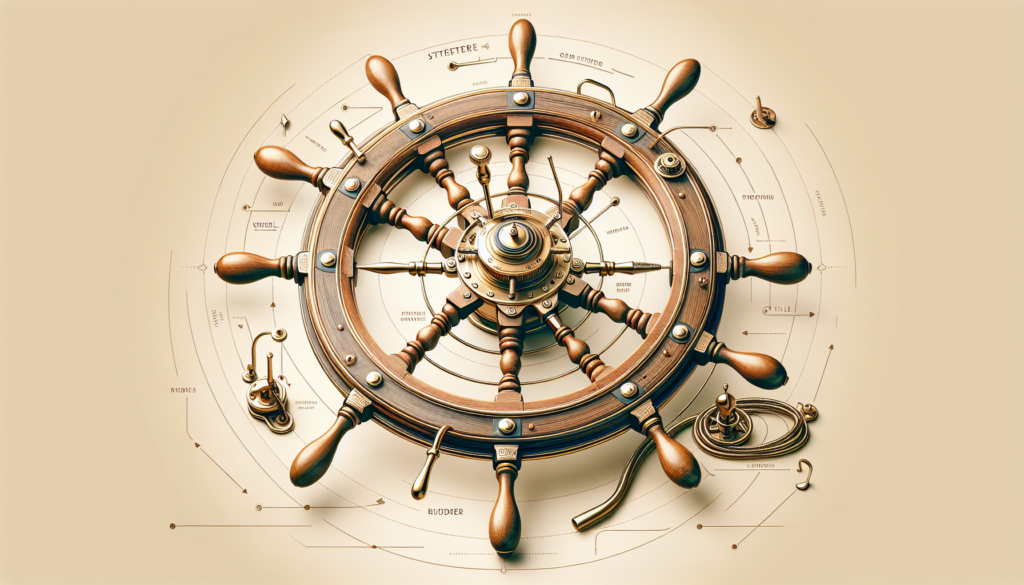Exploring the Intricacies of Boat Steering Systems
When we think of boats, we often envision sleek vessels gliding across the water, cutting through the waves with ease. But have you ever stopped to consider how these boats are maneuvered? The answer lies in the intricate world of boat steering systems. From traditional tiller arms to cutting-edge hydraulic systems, the mechanisms that control a boat’s direction play a crucial role in ensuring a safe and enjoyable voyage.
The Evolution of Boat Steering Systems
Boat steering systems have come a long way since the early days of seafaring. In ancient times, oars were used to steer boats, with rowers exerting physical force to change the vessel’s direction. As technology advanced, more sophisticated steering mechanisms were developed. One of the earliest innovations was the tiller, a wooden lever attached to the rudder that allowed sailors to control the boat’s direction more effectively.
Today, modern boats are equipped with a variety of steering systems, each tailored to the specific needs of the vessel. Hydraulic steering, for example, uses fluid pressure to move the rudder, providing a smooth and responsive steering experience. Electric steering systems, on the other hand, rely on electric motors to control the rudder, offering precise control and ease of use.

The Components of Boat Steering Systems
Understanding how a boat steering system works requires a closer look at its components. The primary element of any steering system is the helm, which houses the controls that allow the boat operator to steer the vessel. The helm is connected to the rudder, the part of the boat that actually changes direction in response to the helm’s movements.
In hydraulic steering systems, a series of hoses and cylinders transmit fluid pressure from the helm to the rudder, causing it to turn. Electric steering systems, on the other hand, use sensors and actuators to translate the operator’s commands into rudder movements. Both systems rely on a combination of mechanical and electronic components to ensure smooth and reliable steering.
Types of Boat Steering Systems
Boat steering systems can be broadly classified into two categories: mechanical and hydraulic/electric. Mechanical steering systems use physical connections, such as cables or pushrods, to transmit the operator’s steering inputs to the rudder. These systems are simple and reliable, making them popular choices for smaller boats and recreational vessels.
Hydraulic and electric steering systems, on the other hand, offer more advanced steering capabilities. Hydraulic systems use fluid pressure to move the rudder, providing precise and responsive control. Electric systems are even more sophisticated, using electric motors and sensors to automate the steering process, reducing the operator’s workload and improving overall performance.
The Importance of Proper Steering System Maintenance
Like any mechanical system, boat steering systems require regular maintenance to ensure optimal performance. Failure to maintain the steering system can lead to a variety of issues, including stiff or unresponsive steering, fluid leaks, and even total system failure. To prevent these problems, boat owners should follow the manufacturer’s recommended maintenance schedule and address any issues promptly.
Regular inspections of the steering system’s components, such as hoses, cylinders, and connections, can help identify potential problems before they escalate. Lubricating moving parts, checking fluid levels, and replacing worn components are all essential tasks that can prolong the life of the steering system and keep the boat safe on the water.
Expert Opinions on Boat Steering Systems
According to marine industry experts, choosing the right steering system for a boat is essential to ensure safe and enjoyable boating experiences. Factors such as the size and type of the vessel, the operator’s skill level, and budget considerations should all be taken into account when selecting a steering system. By consulting with a professional marine technician, boat owners can make informed decisions that will enhance their boating experience.
Experts also stress the importance of regular maintenance and inspection of boat steering systems. By staying proactive and addressing any issues promptly, boat owners can avoid costly repairs and ensure that their vessels remain in top condition. Investing in high-quality steering components and following best practices for maintenance and care can help extend the life of the steering system and keep the boat running smoothly for years to come.
Common Misconceptions about Boat Steering Systems
One common misconception about boat steering systems is that they are all the same. In reality, there are many different types of steering systems, each with its own unique characteristics and capabilities. By understanding the differences between mechanical, hydraulic, and electric steering systems, boat owners can make informed decisions about which system is best suited to their needs.
Another misconception is that boat steering systems are maintenance-free. While modern steering systems are designed to be durable and reliable, they still require regular maintenance to ensure optimal performance. Neglecting maintenance tasks can lead to steering problems that may compromise the safety of the vessel and its occupants.
Conclusion
In conclusion, boat steering systems play a crucial role in ensuring safe and efficient navigation on the water. From traditional tiller arms to state-of-the-art hydraulic and electric systems, the evolution of boat steering technology has transformed the boating experience for enthusiasts around the world. By understanding the components, types, and maintenance requirements of boat steering systems, boat owners can make informed decisions that will enhance their boating experience and keep their vessels in top condition.
Whether you’re a seasoned sailor or a newcomer to the world of boating, taking the time to learn about boat steering systems is essential to becoming a knowledgeable and responsible boat owner. By investing in high-quality steering components, following best practices for maintenance, and seeking expert guidance when needed, you can ensure that your boat remains safe, reliable, and enjoyable for years to come.



